TRAVEO™ T2G CYT3DL
The TRAVEO™ T2G CYT3DL is a family of TRAVEO™ T2G microcontrollers dedicated to automotive systems such as instrument clusters and Head-Up Displays (HUD). The family features a 2D Graphics engine, Sound Processing, an Arm® Cortex®-M7 CPU running up to 240 MHz for primary processing and an Arm® Cortex®-M0+ CPU for peripheral and security processing. Moreover, it includes a WVGA GFX and two unique packages: 216-pin TEQFP and 272-ball BGA.
The TRAVEO™ T2G CYT3DL family products contain embedded peripherals supporting controller area network with flexible data rate (CAN FD), local interconnect network (LIN), clock extension peripheral interface (CXPI), and Ethernet.
The devices are manufactured on an advanced 40-nm process. The TRAVEOTM T2G CYT3DL incorporates Infineon's low-power flash memory, multiple high-performance analog, and digital peripherals, and enables the creation of a secure computing platform.
HMI Tool Certification Program
Infineon’s HMI Tool Certification Program is designed to provide our customers with the best experience when using HMI tools with our TRAVEOTM T2G Graphic Controllers. Partners who qualify for Infineon’s HMI Tool Certification undergo collaborative testing and assessment of their implementation of Infineon’s reference use-cases. learn more
Key Features
- Supports 2D and 2.5D (perspective warping, 3D effects) graphics rendering.
- Internal colour resolution
- 2048 KB of embedded video RAM memory (VRAM)
- Two video output interfaces supporting a display from
- Parallel RGB (max display size: 1600 × 600 at 40 MHz)
- FPD-link single (max display size: 1920 × 720 at 110 MHz)
- One Capture engine for video input processing for ITU 656 or parallel RGB/YUV or MIPI CSI-2 input
- Display warping on-the-fly for HUD applications
- Direct video feed through from capture to display interface with graphics overlay
- Composition engine for scene composition from display layers
- Display engine for video timing generation and display functions
- Drawing engine for acceleration of vector graphics rendering
- Command sequencer for setup and control of the rendering process
- Supports graphics rendering without frame buffers (on-the-fly)
- Single-channel FPD-Link/LVDS interface for up to HD resolution video output
- Four time-division multiplexing (TDM) interfaces
- Two pulse-code modulation-pulse width modulation (PCM-PWM) interfaces
- Up to five sound generator (SG) interfaces
- Two PCM Audio stream mixers with five input streams
- One audio digital-to-analog converter (DAC)
240-MHz (max) 32-bit Arm® Cortex®-M7 CPUs, with
- Single-cycle multiply
- Single/double-precision floating point unit (FPU)
- 16-KB data cache, 16-KB instruction cache
- Memory protection unit (MPU)
- 64-KB instruction and 64-KB data Tightly-Coupled Memories (TCM)
100-MHz 32-bit Arm® Cortex®-M0+ CPU with
- Single-cycle multiply
- Memory protection unit
Inter-processor communication in hardware
4 DMA controllers
- 4160-KB code-flash with an additional 128-KB of work-flash
- 384-KB of SRAM with selectable retention granularity
- Supports Enhanced Secure Hardware Extension (eSHE) and Hardware Security Module (HSM)
- Secure boot and authentication
- AES: 128-bit blocks, 128-/192-/256-bit keys
- 3DES: 64-bit blocks, 64-bit key
- Vector unit supporting asymmetric key cryptography such as Rivest-Shamir-Adleman (RSA) and Elliptic Curve (ECC)
- SHA-1/2/3: SHA-512, SHA-256, SHA-160 with variable length input data
- CRC: supports CCITT CRC16 and IEEE-802.3 CRC32
- True random number generator (TRNG) and pseudo random number generator (PRNG)
- Galois/Counter Mode (GCM)
- Memory protection unit (MPU)
- Shared memory protection unit (SMPU)
- Peripheral protection unit (PPU)
- Watchdog timer (WDT)
- Multi-counter watchdog timer (MCWDT)
- Low-voltage detector (LVD)
- Brown-out detection (BOD)
- Over-voltage detection (OVD)
- Overcurrent detection (OCD)
- Clock supervisor (CSV)
- Hardware error correction (SECDED ECC) on all safety-critical memories (SRAM, flash, TCM)
- Low-power Active, Sleep, Low-power Sleep, DeepSleep, and Hibernate modes for fine-grained power management
- Configurable options for robust BOD
- Up to four pins to wakeup from Hibernate mode
- Up to 61 GPIO pins to wakeup from DeepSleep mode
- Event Generator, SCB, Watchdog Timer, RTC alarms to wake from DeepSleep modes
- Internal main oscillator (IMO)
- Internal low-speed oscillator (ILO)
- External crystal oscillator (ECO)
- Watch crystal oscillator (WCO)
- Phase-locked loop (PLL)
- Frequency-locked loop (FLL)
- Low-power external crystal oscillator (LPECO)
- Up to four CAN FD channels
- Up to 12 runtime-reconfigurable SCB (serial communication block) channels, each configurable as I2C, SPI, or UART
- Up to two independent LIN channels
- Up to two CXPI channels with data rate up to 20 kbps
- 10/100 Mbps Ethernet MAC interface conforming to IEEE-802.3bw
- Two SPIs (single, dual, quad, or octal), xSPI interface
- On-the-fly encryption and decryption
- Execute-In-Place (XIP) from external memory
- Up to 50 16-bit and 32 32-bit Timer/Counter Pulse-Width modulator (TCPWM) blocks for regular operations
- Up to 16 Event Generation (EVTGEN) timers supporting cyclic wakeup from DeepSleep
- Year/Month/Date, Day-of-week, Hour:Minute:Second fields
- 12- and 24-hour formats
- Automatic leap-year correction
- Up to 135 programmable I/Os
- Four I/O types
- GPIO Standard (GPIO_STD)
- GPIO Enhanced (GPIO_ENH)
- GPIO Stepper Motor Control (GPIO_SMC)
- High-Speed I/O Standard with Low Noise (HSIO_STDLN)
- Regulators
- PMIC control module
- One SAR A/D converter
- The ADC also supports six internal analog inputs like
- Bandgap reference to establish absolute voltage levels
- Calibrated diode for junction temperature calculations
- Two AMUXBUS inputs and two direct connections to monitor supply levels
- ADC supports addressing of external multiplexers
- ADC has a sequencer supporting autonomous scanning of configured channels
- One smart I/O block, which can perform Boolean operations on signals going to and from I/Os
- Up to eight I/Os (GPIO_STD) supported
- JTAG controller and interface compliant to IEEE-1149.1-2001
- Arm® SWD (serial wire debug) port
- Supports Arm® Embedded Trace Macrocell (ETM) Trace
- GHS MULTI or IAR EWARM for code development and debugging
- 272-BGA, 16 × 16 × 1.7 mm (max), 0.8-mm ball pitch
- 216-TEQFP, 24 × 24 × 1.6 mm (max), 0.4-mm ball pitch
TRAVEO™ T2G CYT3DL Block Diagram
Online Trainings / eLearning
- Direct memory access (or DMA) is a key technology that enables efficient data transfer and management without CPU involvement
- Become familiar with the transfer modes of the DMA and get to know some basic DMA use cases
- Know the features of the Inter-Processor Communication (IPC)
- Gain knowledge on basic use cases of the Inter-Processor Communication (IPC)
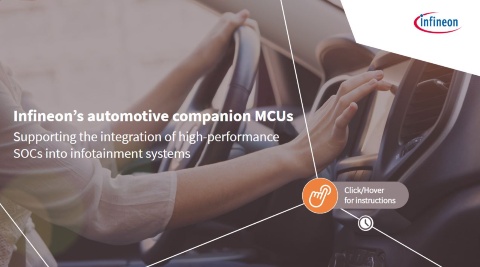
- Define MCU companions, list the challenges they address and describe some use cases
- Know about Infineon’s automotive MCUs
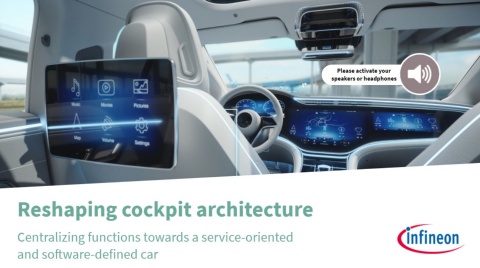
- Understand the evolution of the cockpit architecture
- Recognize the importance of the central modules like head unit and cockpit domain controllers and get to know Infineon solutions and their components
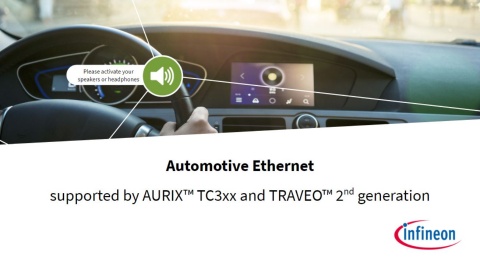
- Be aware of the Ethernet’s interface basic operations on AURIX™ TC3xx and TRAVEO™ T2G
- Identify which time-sensitive networking (TSN) features are supported by both generations’ derivatives
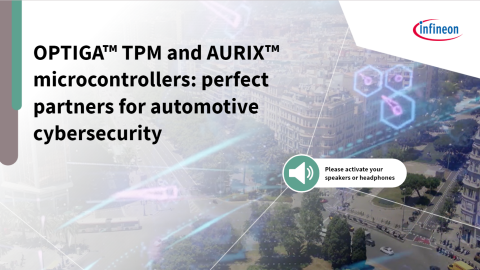
- Identify common security threats to modern cars
- Understand how OPTIGA™ TPM can help automotive systems achieve a high level of security and their applications in different use cases in various host environments
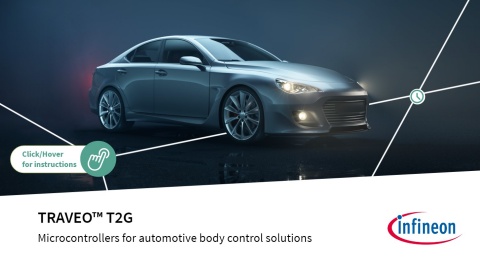
- Describe the main features of Infineon’s TRAVEO™ T2G microcontrollers
- Recognize the different variants that make up this family of products
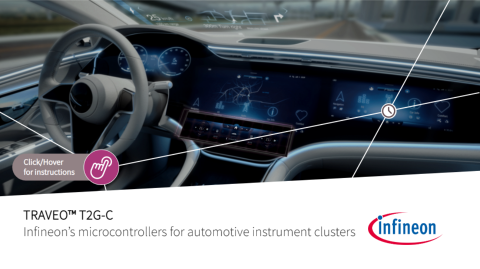
- Infineon has a successful history of supporting various graphics applications in cars with displays.
- Infineon's TRAVEO™ T2G microcontrollers are designed to meet size constraints, reduce costs, and improve performance and bandwidth for car displays, compared to system-on-chip solutions.
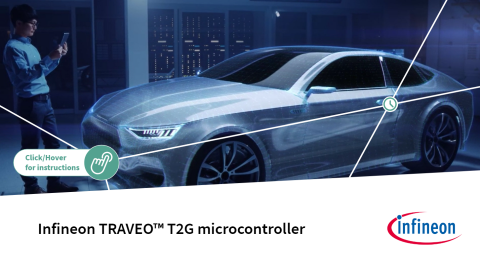
In this training, you will get to know the TRAVEO™ T2G portfolio for body and graphics applications, its key features and safety functions, development kits, and finally TRAVEO™’s automotive software and tool partner ecosystem.
TRAVEO™ T2G protection units provide robust security and protection against malicious or unintended access.
With TRAVEO™ T2G fault subsystem it is possible to detect and diagnose faults in microcontroller systems.




